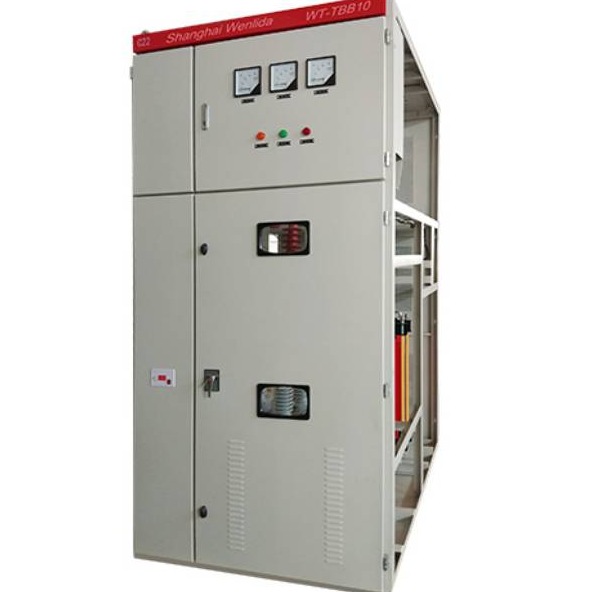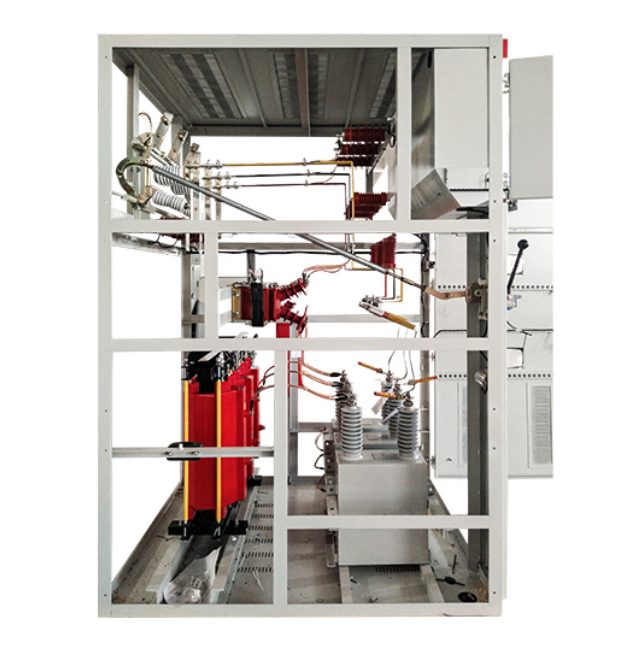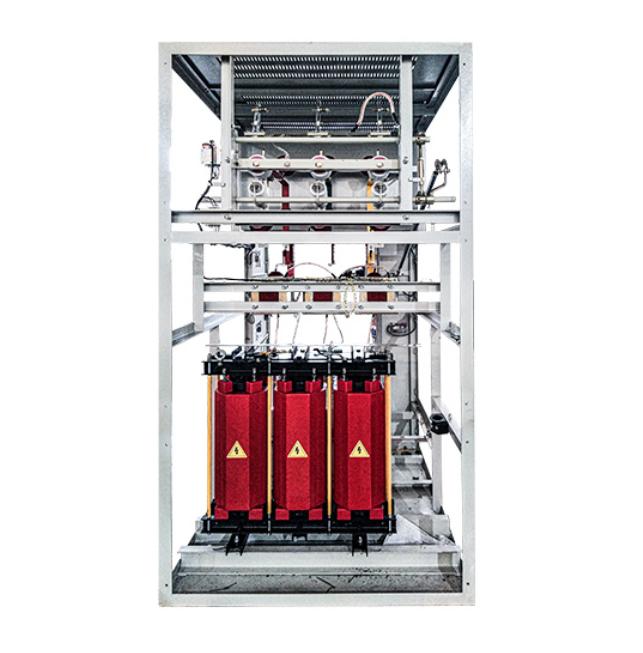Static VAR Compensation: Key to Efficient Power Systems
What is Static VAR Compensation?
Have you ever wondered why the lights flicker or machinery malfunctions when the power system struggles to maintain a consistent voltage? The culprit is often reactive power—an invisible yet vital component of electrical systems. In modern electrical grids, managing this reactive power is crucial for system stability and efficiency. Enter Static VAR Compensation (SVC), a critical technology that helps stabilize voltage, improve power factor, and ensure the reliability of electrical systems.

In simple terms, Static VAR Compensation refers to the use of electrical devices, such as capacitor banks, to absorb or supply reactive power within a system. Unlike active power (which powers devices), reactive power doesn’t do any “useful” work, but it is necessary to maintain voltage levels across the system, enabling the flow of active power. Static VAR compensation systems help balance this reactive power, ensuring that energy is used efficiently, preventing system instability, and minimizing energy losses.
Why Static VAR Compensation is Vital in Various Industries
1. Power Systems and Grid Stability
Power generation, transmission, and distribution systems rely heavily on maintaining a stable voltage to avoid equipment damage or failure. Inadequate reactive power can cause voltage sags, power outages, or even equipment damage due to overloading. With dynamic fluctuations in energy consumption and generation (due to factors like weather or changing load demands), a reactive power compensation system helps ensure grid stability.
For instance, during high demand periods, static VAR compensation devices help maintain the system voltage by supplying or absorbing reactive power where necessary, ensuring that power delivery remains consistent and equipment operates within safe parameters.
2. Industrial Manufacturing
Many large industrial facilities, such as steel mills, cement factories, and chemical plants, use large motors and inductive loads that consume substantial reactive power. This can lead to a poor power factor, where more current is needed than required to deliver useful work. Low power factor results in inefficient energy use, higher energy costs, and potential overloading of transformers and generators. Static VAR compensation helps by improving the power factor, which reduces unnecessary energy consumption and minimizes losses, ensuring better efficiency across operations.
3. Renewable Energy Systems
As the world transitions to more renewable energy sources, managing reactive power becomes increasingly important. Wind and solar power generation are inherently variable, and fluctuations in power output can lead to voltage instability in the grid. Static VAR compensation systems play a vital role in stabilizing voltage in renewable energy systems, ensuring that intermittent energy sources like wind and solar can be seamlessly integrated into the broader power grid without causing voltage imbalances or outages.
4. Data Centers and IT Infrastructure
Data centers and IT hubs rely on constant and reliable electrical power for operations. The large number of computers, servers, and cooling equipment in these facilities often results in a significant amount of reactive power being drawn, which can impact overall system performance. Static VAR compensation improves the power factor in these environments, helping reduce the load on the grid, optimize energy consumption, and prevent issues such as voltage fluctuations or outages that could disrupt operations.

How Static VAR Compensation Equipment Solves Industry Problems
1. Improves Power Factor and Reduces Energy Costs
One of the primary benefits of static VAR compensation is the improvement of the power factor, the ratio of useful power to total power in a system. A power factor closer to 1 indicates a more efficient system, where less energy is wasted. By compensating for reactive power, static VAR equipment helps optimize energy flow, reducing the need for larger, costly infrastructure like transformers or generators. This results in direct energy savings, especially in industrial and commercial applications.
2. Enhances Voltage Stability
Voltage instability is a major challenge for electrical grids, particularly when faced with high-demand or variable energy sources. The WT-TBB reactive power compensation cabinet, for example, can stabilize system voltage by adjusting the reactive power to match load variations. By supplying or absorbing reactive power as needed, these devices ensure that voltage levels remain within acceptable limits, preventing damage to equipment and maintaining the quality of power delivered to consumers.
3. Prevents Overloading of Equipment
In systems without reactive power compensation, transformers, generators, and distribution equipment can become overloaded, reducing their lifespan and efficiency. Static VAR compensation cabinets like the WT-TBB can alleviate this issue by helping to distribute the reactive power demand more evenly across the system. This reduces strain on individual components, extending their lifespan and improving overall system reliability.
4. Cost-Effective and Easy to Maintain
Compared to other reactive power compensation methods, such as synchronous condensers, static VAR compensation is often more cost-effective. The WT-TBB series, for example, offers an excellent cost-to-performance ratio by providing a reliable and efficient means of improving power factor and system stability. Additionally, its modular design allows for easy maintenance, which helps minimize downtime and ensures ongoing system reliability.
WT-TBB Reactive Power Compensation Cabinet: Features and Benefits
Designed for Versatility and Reliability
The WT-TBB reactive power compensation cabinet is a high-voltage shunt capacitor bank specifically designed for use in 6kV, 10kV, and 35kV power systems. It is highly versatile and can be utilized across a range of applications, including industrial, power generation, and renewable energy sectors. The WT-TBB cabinet enhances power factor and voltage stability, reducing the risk of voltage dips, outages, and equipment malfunctions.
Key Features and Specifications
1. Rated Voltage: 6~35KV
2. Rated Capacity: 100~20,000kvar
3. Altitude: ≤2000m
4. Wind Speed: ≤35m/s
5. Installation: Suitable for both indoor and outdoor use
6. Environmental Conditions: Operates in a wide range of temperatures and humidity levels, from -35℃ to 55℃ and up to 90% humidity
7. Protection Features: Equipped with multiple protection methods, including low voltage, over-voltage protection, over-current, and differential voltage protection

Advantages of WT-TBB Compensation Cabinets
Robustness and Reliability: The use of contactor static switching technology ensures long-term stability and reliable performance.
Cost-Effectiveness: Ideal for applications with moderate fluctuations in reactive power demand, the WT-TBB provides excellent value without sacrificing performance.
Simplicity and Easy Maintenance: The modular design makes it easy to disassemble, inspect, and maintain, minimizing downtime.
Why Choose Shanghai Wenlida Technology Co., Ltd. as Your Supplier?
Shanghai Wenlida Technology Co., Ltd. is a trusted supplier of high-quality static VAR compensation equipment, including the WT-TBB reactive power compensation cabinet. With years of experience in the field, the company has developed a reputation for providing reliable, cost-effective solutions to industries worldwide. Their products are designed to meet international standards for performance and safety, ensuring that customers receive the highest quality equipment to meet their unique needs.
Whether you’re managing a power grid, operating an industrial plant, or integrating renewable energy sources, Wenlida’s advanced compensation solutions can help you optimize system performance, reduce energy costs, and ensure long-term operational efficiency.
Conclusion: Enhancing Power System Efficiency with Static VAR Compensation
Static VAR compensation is an essential technology for modern electrical systems. It enhances power quality, stabilizes voltage, and optimizes energy use across various industries, from manufacturing to renewable energy. Equipment like the WT-TBB reactive power compensation cabinet provides a robust, cost-effective solution to meet the growing demands of energy efficiency and system reliability. For businesses seeking to improve power factor, reduce energy costs, and prevent equipment overload, investing in static VAR compensation from a reputable supplier like Shanghai Wenlida Technology Co., Ltd. is a smart and necessary step toward a more efficient future.
